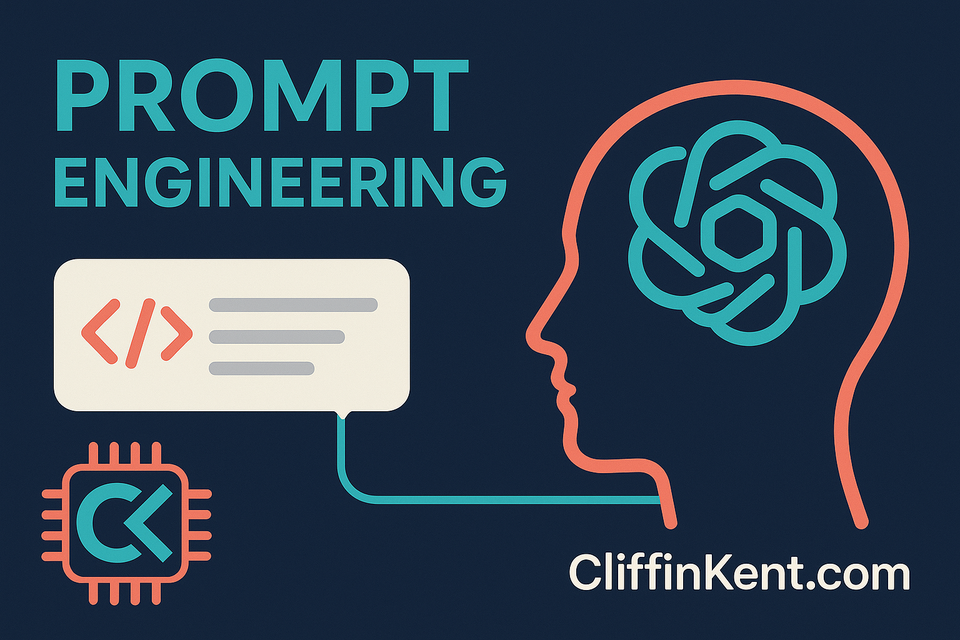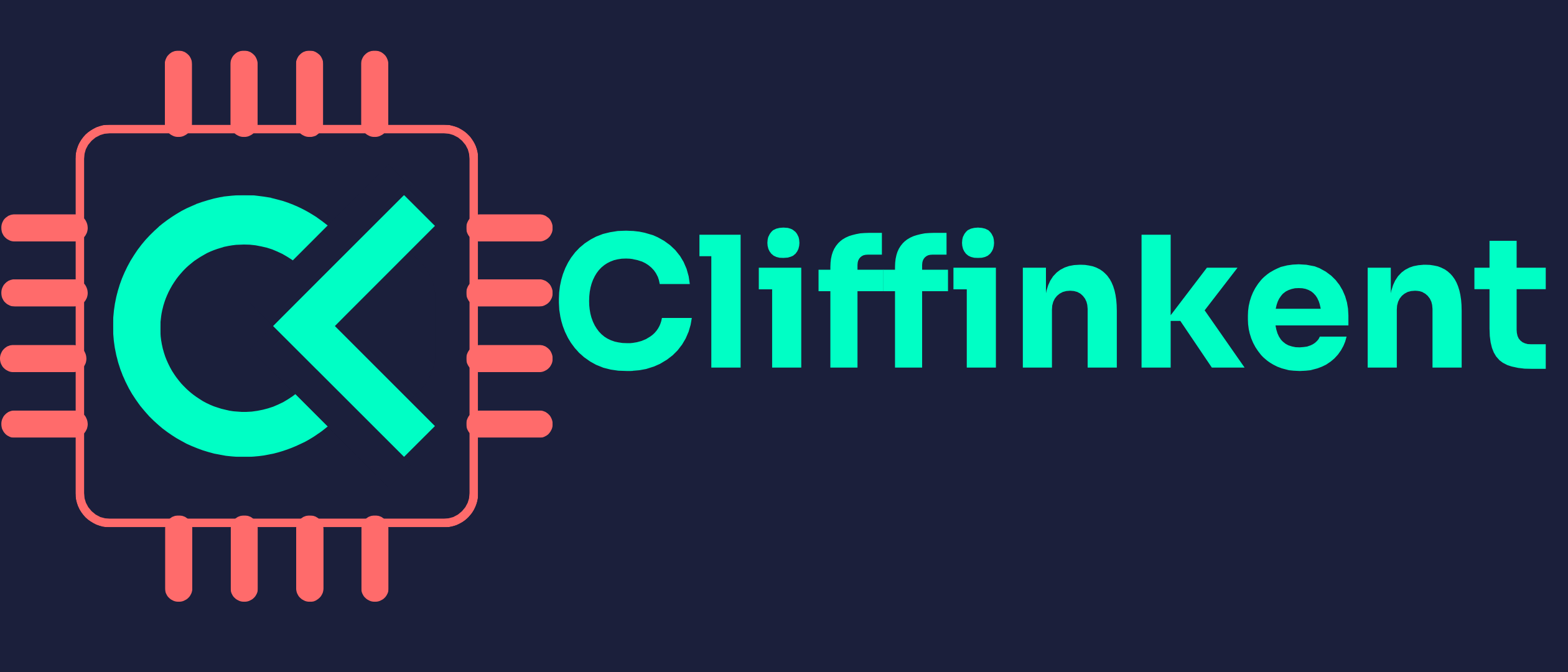Prompt Engineering: How to Talk So AI Listens (and Works Harder for You)

An easy-reading guide from CliffinKent.com
1. What Is Prompt Engineering, Really?
Imagine handing a power tool to a brand-new apprentice. If you mumble the instructions, they’ll likely make a mess. Speak clearly and show what “done right” looks like, and suddenly they’re a productivity machine. Large-language models (LLMs) behave the same way: well-crafted prompts can boost task accuracy, unlock new use-cases, and save you hours.
Why it matters in plain English
- Better prompts → better answers → less re-work.
- They’re the cheat codes that turn a generic chatbot into your personal marketer, coder, or teacher.
- In lab tests, automatic prompt-tuning beat human prompts across dozens of tasks.
2. A (Very) Brief History of Prompt Engineering
| Era | Milestone | Why you should care |
|---|---|---|
| Pre-2010 | N-gram & statistical models | We were already “prompting,” learning that wording matters. |
| 2013-2017 | Word2Vec → Transformers | Context suddenly counted; clarity became gold. |
| 2020 | GPT-3 and 175 B parameters | Prompt design now steers super-sized models. |
| 2022-24 | Chain-/Tree-/Graph-of-Thought, APE | Frameworks that reveal or automate the model’s reasoning. |
Takeaway: Prompt engineering evolved from “type good keywords” to a mini-discipline of its own—and it’s only getting cooler.
3. Why It’s Not Scary (Myth-Busting Corner)
| Myth | Why it’s wrong | Quick fix |
|---|---|---|
| “You must be a coder.” | Prompts are conversation design, not code. | Brief the AI as you would a colleague. |
| “One typo ruins everything.” | LLMs handle noise better than humans. | Iterate: “Try again but…”. |
| “I’ll break the model.” | You can’t; worst case you get a bad answer. | Re-prompt or click Regenerate. |
| “It takes hours.” | A clear template speeds drafting. | See the 5-Step Prompt Recipe below. |
4. The 5-Step Prompt Recipe (Cookbook Style)
- Role: “You are a veteran florist.”
- Goal: “Draft an Instagram caption for a Mother’s Day bouquet.”
- Context: “Customers love puns and warm humour.”
- Format: “3 short sentences, max 1 emoji.”
- Step & Iterate: “Offer two tone options, then wait for my choice.”
Put it together → “You are a veteran florist… [full prompt].” Voilà: high-quality copy in seconds.
5. Prompt Patterns You Can Copy-Paste
| Pattern | Cheat formula | Everyday example |
|---|---|---|
| Persona | “You are a [role]…” | “You are a friendly GCSE maths tutor…” |
| Recipe | “Give me a step-by-step plan to…” | “…organise a pop-up café launch.” |
| Reflection | “Review your answer for errors…” | “Double-check all links are valid.” |
| Fact-Check List | “List facts that should be verified.” | “Highlight any medical claims.” |
| Context Manager | “Remember these details for later…” | “My shop closes at 6 pm; mention this.” |
Pro tip: Mix patterns like Lego bricks. A Persona + Fact-Check combo is great for blog drafts that need trustworthy tone and accuracy.
6. Four Big-Picture Framework Families
6.1 Structural Frameworks
Break the job into mini-steps so the AI “shows its work.” Examples: Chain-of-Thought, Graph-of-Thought. Perfect for lesson planning or troubleshooting.
6.2 Optimisation Frameworks
Algorithms explore millions of wording tweaks—Prompt Space, Automatic Prompt Engineering—and pick winners humans miss.
6.3 Communication-Theory Frameworks
Treat prompting like sending a message over a noisy line. Goal: cut misunderstanding between you (sender) and the model (receiver).
6.4 Cognitive & Ontology Frameworks
Borrow tricks from psychology (“think-aloud”) or knowledge graphs to help models reason, extract facts, and avoid hallucinations.
7. Mini-Tutorial: From Naïve to Ninja in 90 Seconds
- Naïve prompt: “Write a business plan.” (Result: bland, generic.)
- Add Role & Goal: “You are a small-town coffee-shop owner…”
- Add Context: “…target audience is remote workers.”
- Add Format: “Outline as a 1-page executive summary.”
- Iterate: “Expand section 3 with cost estimates.”
Outcome: A tailored, actionable plan that feels like you hired a consultant.
8. Common Pitfalls & Quick Fixes
| Pitfall | What happens | Fast remedy |
|---|---|---|
| Vague requests | Wandering answers | Add a clear role + outcome. |
| No format specified | Wall of text | Request numbered bullets or a table. |
| One-shot mindset | Mediocre first draft | Ask for 3 variants, then refine. |
| Ignoring safety cues | Policy blocks | Rephrase sensitive topics politely. |
9. Resources & Next Steps
- Free cheat sheet: Grab our printable prompt card at https://blog.cliffinkent.com/ai-resources/
- Tool playgrounds: Start with ChatGPT, Claude, or Gemini; all accept the patterns above.
- Further reading: A Prompt Pattern Catalog – nerdy but gold.
10. Final Sip
Prompt engineering isn’t sorcery—it’s simply clear communication amplified by silicon. Start small, layer on role-context-format, and iterate. Your future self (and your bottom line) will thank you.
Curious Reader Question
What’s the first everyday task you’ll rewrite as a prompt after reading this?
Tag me in post on X @Cliffinkent or drop me an email Cliff@cliffinkent.com
References
References
- Marvin, G. et al. (2024). Prompt Engineering in Large Language Models. https://doi.org/10.1007/978-981-99-7962-2_30
- White, J. et al. (2023). A Prompt Pattern Catalog to Enhance Prompt Engineering with ChatGPT. arXiv:2302.11382
- Liu, X. et al. (2023). Prompting Frameworks for Large Language Models: A Survey. (in press)
- Song, Y. et al. (2023). A Communication Theory Perspective on Prompt Engineering Methods for Large Language Models.
- Muktadir, G. M. (2023). A Brief History of Prompt: Leveraging Language Models. arXiv:2310.04438
